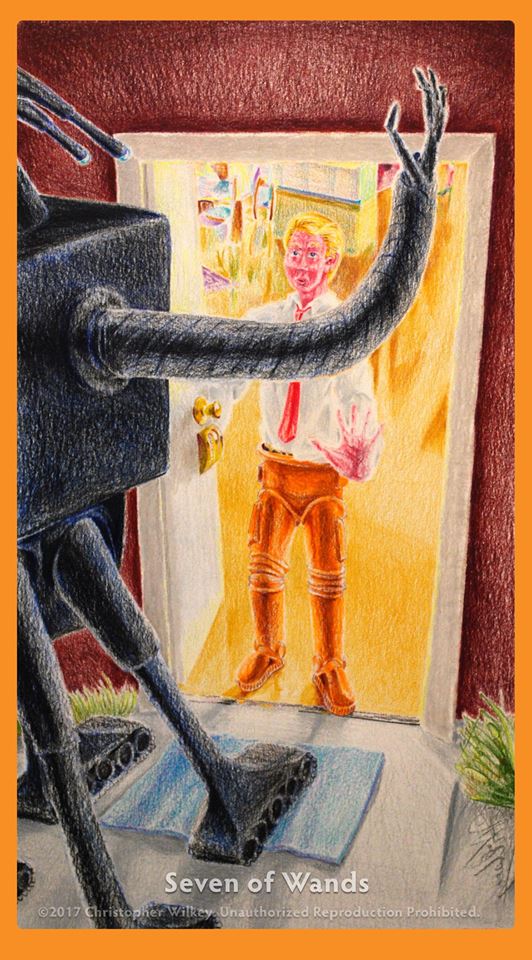Two of the most startlingly original science fiction writers of the past century, Samuel R. Delany and Octavia E. Butler, emerged in the 60s and 70s and created dystopian visions that resonate with us today with more depth and immediacy than the majority of their contemporaries. Both writers also happened to be African American. But why should this detail matter? Why indeed, asked Butler, in an equally relevant question, “is science fiction so white?” She went on to explore the question in a 1980 essay published in Transmission, not with a history of the genre, but with rebuttals to the reasons for excluding people like her.
“A more insidious problem than outright racism is simply habit, custom,” Butler writes. People get comfortable with things as they are—an attitude antithetical to the spirit of sci-fi. “Science fiction, more than any other genre deals with change—change in science and technology, and social change. But science fiction itself changes slowly, often under protest.”
Butler died too young, in 2006 at age 58; but she lived to see resistance to change in science fiction persist into the 21st century. Yet in her most compelling, and slightly terrifying, projection into the future—her mid-90s Parable series of novels—change is the only thing that anyone can rely on.
All that you touch, you Change. All that you Change Changes you.
N.K. Jemison quotes these lines from Parable of the Sower in her introduction to the book’s reissue this year. Published in 1993, Parable’s futurism didn’t have the same frisson as that of, say, William Gibson at the time. “Roving, uncontested gangs of pedophiles and drug-addicted pyromaniacs? Slavery 2.0? A powerful coalition of white-supremacist, homophobic, Christian zealots taking over the country?” writes Jemison. “Nah, I thought, and hoped Butler would get back to aliens soon.” Set in the context of a U.S. post-massive climate collapse (possibly), hyper-financialization, and corporate rule.… the novel now seems all too prescient to its current-day readers.
But even Butler’s alien stories are stories about humans in radical transition, and collective social actions with both devastating and transformative outcomes. In Dawn, the first novel in her Xenogenesis trilogy (now called “Lilith’s Brood”), human woman Lilith Iyapo “awakens after 250 years of stasis,” following an apocalyptic nuclear war on Earth, “to find herself surrounded by aliens called the Oankali,” as the animated TED-Ed lesson above by Ayana Jamieson and Moya Bailey tells it. These beings want to trade DNA with the remaining humans, thereby creating a hybrid species. The alternative is sterilization.
The chilling scenario in Dawn and its successors has its moments of Lovecraftian dread, but it goes in an even stranger direction, bringing an added dimension to the meaning of the word “dehumanization.” What would it mean to slowly transform into another species? Such profoundly universal questions about the meaning of human identity reached “readers who had been excluded from the genre,” notes Emanuella Grinberg at CNN. Butler peoples her books with humans of every color and ethnicity, and aliens only she might have imagined. But most of her protagonists are black and brown women. Many of the readers Butler influenced, like Jemison, are women of color who became genre-changing sci-fi writers themselves.
Butler’s work “helped define the literary cornerstone of Afrofuturism,” notes Grinberg. Her writing was strategic, a way to confront dehumanizing political and social political realities. Parable of the Sower, the TED lesson explains, was partly a response to Butler’s home state of California’s Proposition 187, which denied undocumented immigrants basic healthcare, education, and basic services. In the follow-up, Parable of the Talents (1998), an authoritarian presidential candidate campaigns on the slogan “Make American Great Again.” Her best-selling novel, Kindred, published in 1979, tells the story of a contemporary woman repeatedly pulled back in time to the Maryland plantation of her enslaved ancestor.
Why should we read Octavia Butler? You’ll have to read her to answer that question yourself. But I’d venture to say—along with the intro to her life and work above—because she had a better read on how the time she lived in would turn into the time we live in now than nearly anyone writing at the time; because she told strange, wonderful, outlandish, compelling stories that stretched the imagination without losing sight of the human core; because, like Ursula K. Le Guin, she challenged the world as it is with profound visions of what it might be; and because she not only excelled as a storyteller but specifically as a committed science fiction storyteller, one who deeply touched, and thus deeply changed, the form.
Related Content:
Octavia Butler’s 1998 Dystopian Novel Features a Fascistic Presidential Candidate Who Promises to “Make America Great Again”
The Daily Rituals of 143 Famous Female Creators: Octavia Butler, Edith Wharton, Coco Chanel & More
Celebrate the Life & Writing of Ursula K. Le Guin (R.I.P.) with Classic Radio Dramatizations of Her Stories
Josh Jones is a writer and musician based in Durham, NC. Follow him at @jdmagness







